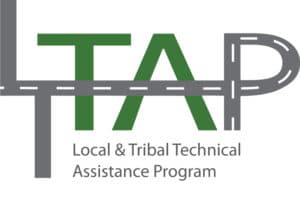
Online Training with LTAP
LTAP Centers across the country are providing opportunities for online learning at no cost.
SCLTAP Self Paced Webinars
We created several self-paced webinars that can be viewed anywhere, at anytime, and at no cost. Current topics include:
- Asset Management for Local Agencies
- Right of Way Maintenance
- Road Safety Audits
- Signage and the MUTCD
PCA Infrastructure Webinar Series
Various Dates
The Infrastructure Webinar Series is back! Beginning April 28th at 11:00 am PST, the Portland Cement Association will present the first of ten free, one-hour, live webinars.
Topics will cover a selection of cement-based infrastructure applications in the pavements, water resources, and geotechnical markets. Earn one (1) PDH credit for each live webinar you participate in, and receive free electronic copies of relevant PCA technical publications.
Click the orange button below to find more topic information and registration links for these upcoming webinars.
Beat the Cold: Working in Winter Weather
Watch Anytime
If you work in an area with harsh winter conditions—such as low temperatures, snow, and ice—or in a remote location, this video is for you. The Nevada Local Technical Assistance Program, or LTAP, is here to help you recognize and prepare for winter dangers.
Reading Construction Plans
Watch Anytime
This is designed to help engineers and technicians that are new to the field be able to accurately review construction plans. This will include identifying key symbols, interpreting notes and an explanation of commonly used terms. Specialties may include stormwater/erosion control plans, geotechnical plans, facilities/building plans and civil construction plans
Safe Transportation for Every Pedestrian (STEP)
Watch Anytime
Crosswalk Visibility
Crosswalk Visibility Enhancements, one of the STEP program countermeasures, can reduce crash risk for pedestrians by using low cost improvements such as signage, markings, and overhead lighting to increase the conspicuity of pedestrians at or in the crosswalk.
Refuge Islands
Pedestrian Refuge Islands, one of the
STEP program countermeasures, can reduce crash risk for pedestrians by providing a raised median in the middle of the roadway where pedestrians may cross in two stages.
Raised Crosswalks
Raised Crosswalks, one of the STEP program countermeasures, can reduce crash risk for pedestrians by slowing traffic at intersections and mid-block locations.
Hybrid Beacons
Pedestrian Hybrid Beacons (PHBs), one of the STEP program countermeasures, can reduce crash risk for pedestrians by controlling traffic on multi-lane or high speed roadways.
Road
Diets
Road Diets, one of the STEP program countermeasures, can reduce crash risk for pedestrians by reducing vehicle speeds, turning conflicts, and crossing distance.
Data Driven Safety Analysis & Planning
Register Today | Self-Paced
The Roadway Safety Foundation is pleased to offer a self-paced introductory course on the benefits and applications of usRAP. If you’re looking for opportunities to learn and stay engaged during these challenging times, RSF is able to provide this introductory training course and professional development credits free of charge.
This course is a 1-hour overview of usRAP to help decision makers, officials, and engineers decide if usRAP is right for their needs. It covers the history of usRAP, the research basis for its protocols, the process of conducting a usRAP study, and the outputs from usRAP’s ViDA software. This course is appropriate for a general audience looking for an introduction to usRAP.
Statewide and Metropolitan Transportation Programming
Register Today | Self-Paced
Are you a transportation planning or programming professional interested in learning about metropolitan transportation improvement programs? If so, this web-based training is for you!
This new course provides introductory-level information on the process and requirements for developing and implementing metropolitan Transportation Improvement Programs (TIPs) and Statewide Transportation Improvement Programs (STIPs). The training includes administrative modifications and amendments, public involvement, financial planning and performance-based planning and programming (PBPP).
The training highlights the Federal Highway Administration (FHWA)/Federal Transit Administration (FTA) requirements for statewide, non-metropolitan, and metropolitan transportation planning and programming processes.
The three-hour, web-based training (WBT), will help you to learn the following:
- Recognize how metropolitan areas and States reach decisions on transportation policies, plans, and programs.
- Identify major funding sources and the flexibility to use funds in addressing metropolitan and statewide transportation needs.
- Identify the role of key documents in transportation decision-making.
- Define the concept of fiscal constraint in relation to financial planning and programming.
- Identify how projects are selected and programmed in the STIP/TIP.
- Identify processes related to transportation program approval and implementation.
- Transportation planning and programming professional will learn the connection between long-range transportation planning and prioritizing projects within TIPs and STIPs. You will also earn 0.3 continuing education units (CEUs) for certification.
Improve your organization’s transportation decision-making process and register for this course today!
Talent Management Strategies for Agencies in Turbulent Times
Watch Anytime
As agencies face unprecedented hurdles in today’s world, employee needs are the top priority for HR and L&D leaders. With the right resources in place, government agencies can continue to provide consistent and transparent communication and uninterrupted employee development and onboarding—further strengthening the agency.
Join us for a conversation with representatives from Collier County, FL Human Resources, and the Massachusetts Department of Transportation. We will discuss how they have overcome obstacles in their employee onboarding and development to deliver highly effective talent management strategies during turbulent times.
You’ll learn how two distinct agencies have overcome obstacles such as:
- Training different compositions of their workforce with varying degrees of technological capabilities;
- Labor and employee relations concerns;
- Rate of required change; and,
- Positioning technology as an enabler and not a barrier.
During this conversation, we will highlight lessons learned that you may be able to apply in your agency to help cover these or similar obstacles you face.
Preparing and Communicating Effective Utility Relocation Requirements
Watch Anytime
Implementing effective utility relocation requirements is crucial to achieve success in highway projects. Lack of utility relocation requirements can lead to:
- Time delays in transportation projects
- Cost overruns
- An increase in construction contractor’s risk
- Less qualified bidders or higher bids on transportation projects
Preparing and Communicating Effective Utility Relocation Requirements (FHWA-NHI-134117) is a self-paced, web-based training that provides state transportation and local public agency personnel and FHWA division officials with valuable knowledge on the importance of utility agreements and its requirements.
After completing this 3.5 hour course, learners will be able to:
- Identify and apply the elements needed for their projects
- Improve project delivery
- Minimize cost and time change orders in utility agreements and utility-related construction bid packages
Transportation officials, don’t allow the lack of utility relocation requirements to cause project delays. Enroll today to learn how incorporating utility relocation requirements can push your organization’s projects in the right direction.

